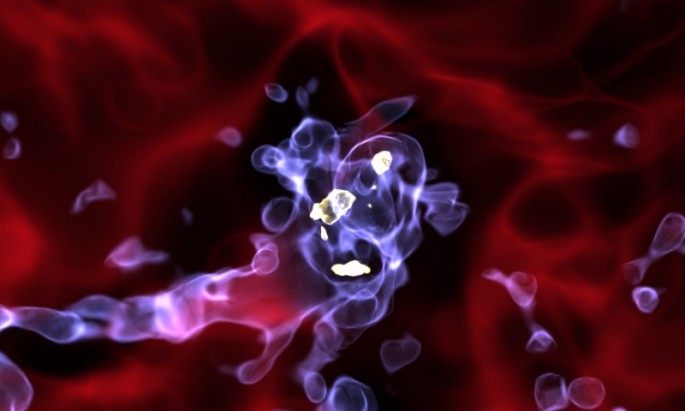New reseach reveals how the brightest galaxies in the universe were formed where scientists believe that they gain their power from colossal flows of cosmic gas.
The most brilliant galaxies in the cosmos are known as submillimeter galaxies that are first detected more than ten years ago. The light that they emit are absorbed by interstellar dust and the re-emitted at distant infrared sub millimeter wavelengths, outside the visibility range. This means that astronomers only detected these luminous galaxies at these wavelengths, remaining invisible elsewhere.
According to lead author of the study astrophysicist Desika Narayanan from the Haverford College in Pennsylvania, these galaxies possess luminosities at least 100,000 times more than the Milky Way galaxy.
These sub millimeter galaxies are created some 3 billion years ago during a "cosmic noon" where stars and galaxies are formed at the fastest and greatest rates. They give birth to stars 1,000 times greater than the Milky Way today where no other galaxy is known to do so in the cosmos, according to researchers.
To date, astronomers believe that there are two theories as how these galaxies were formed. The first one involves galactic collisions of stars rich in gas that powered brief 100 million year long bursts of incredible star formation. The other one suggests that galaxies slowly went through an accretion over the course of 1 billion years but neither can explain how these galaxies become the most luminous ones across the universe.
This new study now presents galaxy formation simulations which are good matches for all the known properties of sub millimeter galaxies, for the first time ever. According to Dušan Kereš from the Center for Astrophysics and Space Sciences at University of California in San Diego, these brightest galaxies are often thought to be products of large galaxy mergers since all the brightest galaxies near the Milky Way resulted in mergers.
However, these new simulations suggest the formation process of these galaxies were slow and steady, building up gas, as gas accretes from interstellar space and accumulates in these galaxies.The new simulations also reveal that these galaxies have sustained star formation rates of 500 to 1,000 suns every year for the lasy 1 billion years or so. Astronomers now consider this as a natural and long lasting phase as these massive galaxies evolve.
During supernova explosions, dying stars can eject and propel gas away from these galaxies, stripping away much needed fuel for star generations. However, scientists also discovered that these gas outflows cannot escape the massive gravitational forces of these galaxies, where simulations suggest that this gases return to these galaxies and gets recycled as new stars.
These new findings are published in the journal Nature.



























